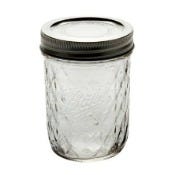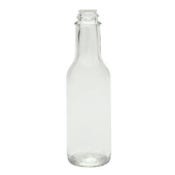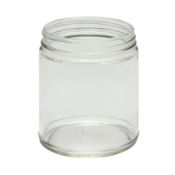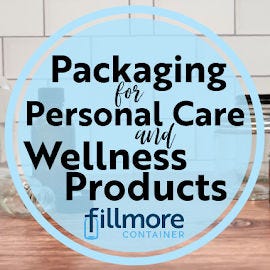
How to Sterilize Canning Jars & Lids
Although this is a very common question, before we tell you how to sterilize canning jars, we will discuss some of the misconceptions on this issue. We will look at when and why sterilizing jars prior to canning could be necessary.
What does Sterilization mean?
To sterilize a canning jar, it would have to be physically clean from debris first. Then it would be exposed to moist heat (boiling water) for a duration of 10 minutes or more.
In the food safety realm, there are 3 terms used when describing the level of “clean”. These actions are:
- Cleaning: removing all visible dirt, soil, chemical residues, allergens from the intended surfaces.
- Sanitizing: reducing the number of microorganisms to a safe level. This is done after cleaning.
- Sterilizing: removing/killing all microorganisms from intended surfaces.
Shedding light on misconceptions:
- All canning jars must be sterilized before use: No. All of them do not. If you are going to process the jars in the traditional boiling waterbath or pressure canner for the time recommended by a trusted authority like the National Center for Home Food Preservation (NCHFP), the jars will be sterilized in the canning process. Yes, you do want to warm them up to avoid thermal shock before you fill them with hot product or place them into very hot water, but you do not need to sterilize the jars or the lids. (See below for exceptions.)
- Using an Oven: This is not recommended. Most mason jars or canning jars are not intended to take the dry heat required for sterilization. This method of heating jars increases risk of thermal shock and breakage. Mason jars (even Ball/Newell/Kerr/GH/AH) are not tempered. Learn more about that here.
- Using the dishwasher: While this will not sterilize your jars (which we’ve already deemed unnecessary), it can sanitize them and keep them warm for you prior to filling.
When should you pre-sterilize your canning jars and/or lids?
If your processing time is less than 10 minutes: Small jars of jams & jellies can have short processing times – you can choose to lengthen their processing time to 10 minutes OR you can pre-sterilize the jars. If you think your product won’t respond well to the full 10 minutes, then just pre-sterilize them. (remember to make any adjustments to account for elevation)
If your processing temperature will not reach boiling: Low-temp pasteurization process for pickles, for example, would benefit from pre-sterilization. While there aren’t many home canning recipes that fit into this category, there are many recipes approved by process authorities for those selling their products that do.
If your process is hot fill & cap: Since you’re trapping everything inside that jar/bottle once you cap it, and it won’t be placed in a water bath of any kind, you do need to start out with pre-sterilized jars/bottles. Again, this isn’t a process that’s approved for home canning by the NCHFP, but is approved for those who have gone through the hoops and received that approval from the process authority.
Tips
- It is always important to wash your jars right before you use them – whether you are pulling them from your pantry shelf or out of a brand new box. This is also a good time to check for cracks, scratches, chips etc that may impact your success rate.
- With most metal lids, rust is an eventual possibility. If you make the entire lid wet, it is difficult to get all of the moisture out, and eventually rust may form. Getting lids entirely dry as quickly as possible will help minimize the rust formation. Rust can also be accelerated by the present of some ingredients, especially acidic liquids. Consider when a plastic lid might be a better option.
- If you do need to pre-sterilize your jars: The easiest way to do this in a home kitchen is to simply use a large pot of boiling water. Carefully place your jars in the water, allowing them to be filled with the water in the process, bring to a boil for 10 minutes.
- Remember thermal shock limits and consider the impact of what you are putting into your jars – is it hot, warm, or room temperature? Brush up on thermal shock in our tempering post.
- If in doubt, ask a professional! Do be careful who you trust. If you only feel comfortable following guidelines put forth by the NCHFP, that is entirely fine. Because we do have customers who have received approvals for their recipes through their proper process authority, and are in contact with those authorities, we do address processes which are not recommended for “home canning”. Our goal is for preserving safely and successfully…not to convince people to take risks.









1 Comment